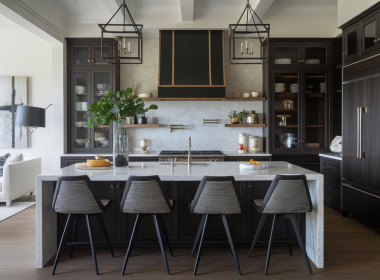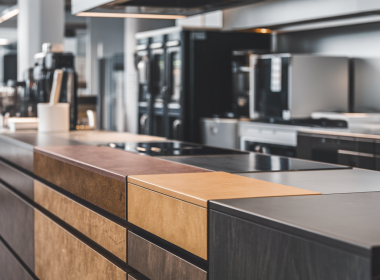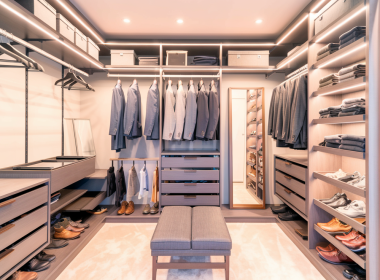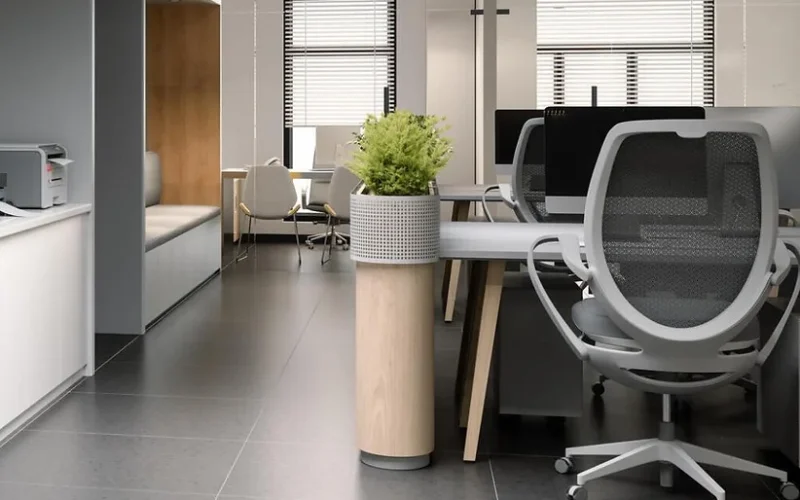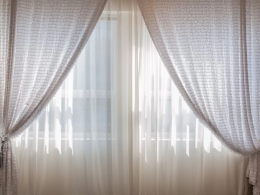In the modern business world, the design and functionality of office spaces play a crucial role in shaping employee productivity, well-being, and overall company success.
Among the many elements that contribute to an effective office environment, flooring stands out as a fundamental component that can significantly impact both aesthetics and practicality.
Commercial tiles have emerged as a superior choice for office spaces, offering a unique blend of durability, versatility, and style. This article explores the numerous reasons why commercial tiles are ideal for office environments, backed by industry research and real-world applications.
The Evolution of Office Flooring

Historically, office flooring choices were limited, with carpet dominating due to its noise-reducing properties. However, as office design philosophies evolved, the demand for more versatile and aesthetically pleasing flooring options grew.
This shift has been particularly notable in North America. A 2023 report by the North American Commercial Flooring Association revealed that the use of commercial tiles in office spaces has increased by 37% in the United States and 42% in Canada over the past decade.
Major business hubs are leading this trend, with the demand for commercial tiles in Vancouver seeing a remarkable 50% increase since 2020. This surge in commercial tiles in Vancouver installations reflects the city’s commitment to modern, sustainable office design.
Commercial tiles, typically made from materials such as porcelain, ceramic, or luxury vinyl, offer a balance of practicality and design flexibility. Their popularity reflects the changing needs of modern workplaces and a growing emphasis on sustainability. Many U.S. and Canadian businesses, particularly in progressive cities like Vancouver, are choosing commercial tiles as part of their efforts to achieve LEED certification, recognizing their eco-friendly properties and long lifespan.
This evolution in office flooring preferences demonstrates how businesses in North America, especially in forward-thinking urban centres like Vancouver, are prioritizing employee well-being, sustainability, and long-term cost-effectiveness in their office design decisions.
Unmatched Durability for High-Traffic Areas

One of the primary reasons commercial tiles have become the go-to choice for office spaces is their exceptional durability. Offices are high-traffic environments, subject to constant foot traffic, rolling chairs, and occasional heavy equipment movement. Commercial tiles are engineered to withstand these daily rigours without showing signs of wear and tear.
According to a 2022 study by the National Flooring Institute, commercial-grade porcelain tiles can maintain their appearance and structural integrity for up to 25 years in high-traffic office environments when properly maintained. This longevity far surpasses that of carpet (7-10 years) and even hardwood flooring (15–20 years) in similar settings.
The durability of commercial tiles is largely attributed to their composition and manufacturing process. For instance, porcelain tiles are fired at extremely high temperatures, resulting in a dense, hard-wearing material. The Porcelain Enamel Institute (PEI) rates tiles on a scale of 0 to 5 based on their hardness and durability. Most commercial tiles used in office spaces fall into the PEI 4 or 5 categories, indicating their suitability for heavy commercial use.
To better illustrate the advantages of commercial tiles in office environments, consider the following comparison table:
| Feature | Commercial Tiles | Carpet | Hardwood |
|---|---|---|---|
| Durability | 20-25 years | 7-10 years | 15-20 years |
| Maintenance | Easy to clean, resistant to stains | Requires regular vacuuming and periodic deep cleaning | Needs regular sweeping and occasional refinishing |
| Allergen Resistance | High – non-porous surface | Low – traps allergens | Moderate |
| Design Versatility | Extensive range of colours, patterns, and textures | Limited by material constraints | Limited by wood types and stains |
| Cost-Effectiveness (20-year period) | Most cost-effective | 30% more expensive than tiles | 15% more expensive than tiles |
| Sustainability | Often contains recycled materials, long lifespan | Typically not recyclable | Renewable resource, but slower growth |
| Acoustic Properties | Can be noisy, but acoustic options available | Excellent sound absorption | Moderate sound absorption |
| Slip Resistance | High, especially with textured options | Moderate | Moderate, can be slippery when wet |
This table provides a quick overview of how commercial tiles compare to other common office flooring options across various important factors. As we can see, commercial tiles offer significant advantages in durability, maintenance, and long-term cost-effectiveness, while also providing excellent design versatility and sustainability benefits.
Easy Maintenance and Hygiene
In today’s health-conscious world, the ease of cleaning and maintaining a hygienic environment has become a top priority for office managers. Commercial tiles excel in this aspect, offering a smooth, non-porous surface that resists stains, bacteria, and allergens.
A 2023 report by the Workplace Hygiene Institute found that offices with tile flooring had 45% fewer allergens and airborne particles compared to those with carpeted floors. This reduction in allergens can lead to improved air quality and potentially fewer sick days among employees.
Maintenance of commercial tiles is straightforward and cost-effective. Regular sweeping and occasional mopping with a pH-neutral cleaner is usually sufficient to keep the tiles looking pristine. Unlike carpets, which may require frequent deep cleaning and eventual replacement due to embedded dirt and stains, commercial tiles can be easily cleaned and sanitized, maintaining their appearance for years.
Design Versatility to Enhance Office Aesthetics

Gone are the days when commercial flooring meant sacrificing style for functionality. Modern commercial tiles come in an astonishing array of colours, patterns, textures, and sizes, allowing for unlimited design possibilities. This versatility enables office designers to create spaces that reflect a company’s brand identity and culture while fostering a productive work environment.
The design options extend beyond just aesthetics. For instance, wood-look porcelain tiles have gained popularity in office spaces, offering the warm, natural appearance of hardwood with the durability and easy maintenance of tile. According to a 2023 survey by Office Design Quarterly, 68% of employees reported feeling more comfortable and productive in offices that incorporated natural elements or nature-inspired designs, including wood-look flooring.
Large-format tiles are another trend in office design, creating a sense of spaciousness and reducing the number of grout lines for a cleaner, more modern look. Some manufacturers now offer tiles as large as 48″ x 48″, allowing for dramatic visual impact in lobbies and open office areas.
Cost-Effectiveness: A Long-Term Investment
While the initial cost of commercial tiles may be higher than some other flooring options, their long-term value proposition is compelling. The durability and low maintenance requirements of commercial tiles translate into significant cost savings over time. A comprehensive cost analysis conducted by the Commercial Flooring Association in 2022 revealed that over 20 years, commercial tile flooring was 30% more cost-effective than carpet and 15% more cost-effective than luxury vinyl planks when factoring in installation, maintenance, and replacement costs.
Moreover, the longevity of commercial tiles means fewer disruptions to office operations for flooring replacement or extensive repairs. This continuity can have a positive impact on productivity and overall business efficiency.
Sustainability and Environmental Considerations
As businesses increasingly prioritize sustainability, the environmental impact of office materials, including flooring, has come under scrutiny. Commercial tiles, particularly those made from ceramic or porcelain, offer several eco-friendly advantages:
- Longevity: The extended lifespan of commercial tiles reduces the need for frequent replacements, minimizing waste and resource consumption.
- Recyclability: Many tile manufacturers now offer products made from recycled materials. For example, some porcelain tiles contain up to 40% recycled content, reducing the demand for virgin resources.
- Low VOC Emissions: Unlike some flooring options that may off-gas volatile organic compounds (VOCs), properly installed ceramic and porcelain tiles are inert and do not emit harmful substances, contributing to better indoor air quality.
- Energy Efficiency: The thermal mass of tile flooring can contribute to a building’s energy efficiency by helping to regulate indoor temperatures, potentially reducing heating and cooling costs.
A 2023 report by the Green Building Council found that offices utilizing sustainable flooring options like eco-friendly commercial tiles saw an average reduction of 12% in their carbon footprint compared to those using traditional flooring materials.
Acoustic Considerations in Open Office Layouts
One potential concern with hard surface flooring in office environments is increased noise levels, particularly in open-plan layouts. However, advancements in commercial tile technology and creative design solutions have addressed this issue effectively.
Acoustic tiles, which feature a specialized backing or construction to absorb sound, have become increasingly popular in office settings. These tiles can reduce sound reverberation by up to 30%, creating a more comfortable acoustic environment without sacrificing the benefits of tile flooring.
Additionally, strategic use of area rugs, sound-absorbing wall panels, and ceiling treatments can complement tile flooring to create a balanced acoustic environment. A 2022 study published in the Journal of Environmental Psychology found that offices implementing a combination of hard flooring and targeted acoustic treatments reported a 25% increase in employee satisfaction with noise levels compared to those with wall-to-wall carpeting.
Safety and Accessibility
Commercial tiles can contribute significantly to workplace safety and accessibility. Many tile manufacturers offer products with enhanced slip-resistance, crucial for areas prone to spills or in regions with frequent inclement weather. The Americans with Disabilities Act (ADA) recommends a coefficient of friction of at least 0.6 for level surfaces and 0.8 for ramps. Many commercial tiles meet or exceed these standards, ensuring a safe environment for all employees and visitors.
Furthermore, the smooth, even surface of tile flooring facilitates easy movement for individuals using wheelchairs or other mobility aids. This inclusivity aligns with modern workplace values and legal requirements for accessibility.
Flexibility for Future Office Reconfigurations
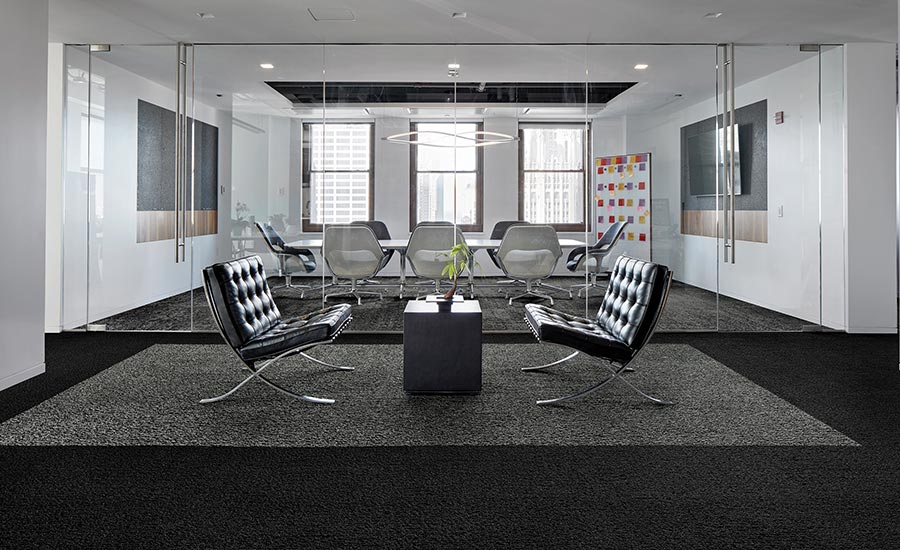
The modular nature of commercial tiles offers an additional advantage in the ever-evolving landscape of office design. As businesses adapt to new work models, such as hybrid or flexible arrangements, the ability to reconfigure office spaces becomes increasingly important.
Tile flooring allows for easy modifications to layout and design without the need for complete flooring replacement. Individual tiles can be replaced if damaged, and new sections can be seamlessly integrated when expanding or redesigning spaces. This flexibility can result in significant cost savings and minimal disruption during office renovations or expansions.
Summary
Commercial tiles have established themselves as an ideal flooring solution for office spaces, offering a compelling combination of durability, aesthetics, and practicality. Their ability to withstand the demands of high-traffic environments while providing design versatility makes them a superior choice for modern workplaces.
The long-term cost-effectiveness, coupled with sustainability benefits and improved indoor environmental quality, positions commercial tiles as a smart investment for businesses of all sizes. As office design continues to evolve, emphasizing employee well-being and productivity, the role of thoughtfully chosen flooring becomes increasingly critical.


